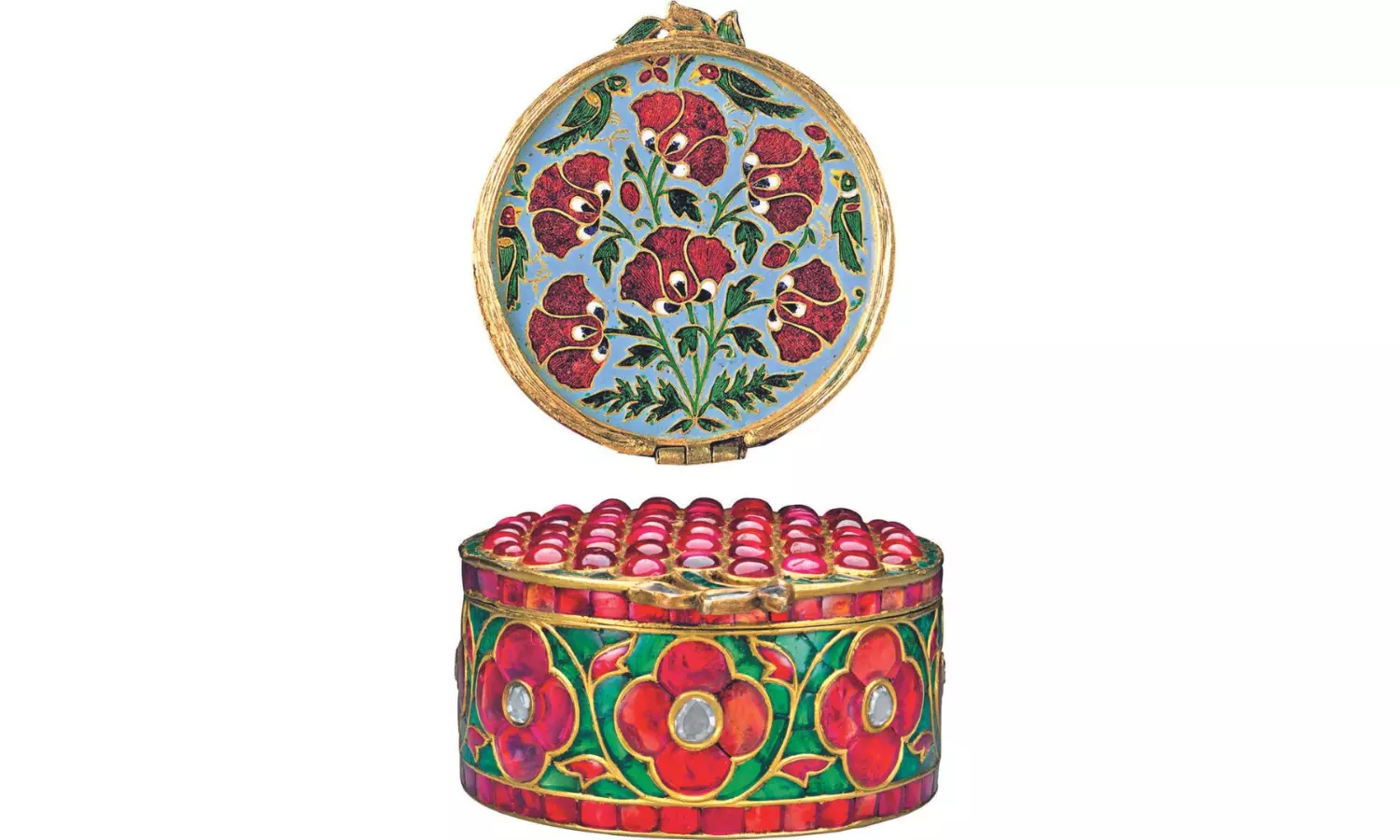The magic of Meenakari
Turban ornaments with a stunning combination of gemstones and enamels, bird pendants from the mid-18th century and enamel boxes inlaid with precious stones — these are just some of the eye-watering pieces of jewelry on display at the newly opened Museum of Meenakari Heritage in Jaipur;

Founded by ace jewellery designer Sunita Shekhawat as a state-of-the-art permanent gallery that preserves and celebrates the rich tapestry of Meenakari, this is a one-of-its-kind preserve for a traditional Indian art form. Conceptualized and curated by scholar and art historian Usha R. Balakrishnan, this museum pays homage to the mastery and skill of countless artisans who have carried forward this ancient art form through the centuries. Little wonder that it took five years for the museum to come to fruition.
Spread over 2200 sqft, the collection includes over 120 reproductions of jewellery pieces along with 300 images obtained from 15 museums across the world including the British Museum, the Al-Thani Collection, Victoria & Albert Museum, Metropolitan Museum of Art among others.
A TRADITIONAL ARTFORM
The art of Meenakari or enamel work is an age-old technique renowned for its vibrant and intricate designs on metal surfaces. While enamel work originated in Persia, it has flourished in India, particularly in Rajasthan where it is passed down through the generations and got deeply embedded in the region's artistic legacy.
The art form of Meenakari employs vitreous glass to decorate jewelry. The manner in which Indian artisans have drawn designs and motifs from nature, developed their own palette of colours and painstakingly decorate jewels with enamel is special. The process is detailed, time-consuming and requires an immense amount of skill and knowledge.
Usha explains, “The beauty of wearing a piece of jewelry decorated not only with gemstones by with an entire garden of flowers and birds on the back is really special. It binds the wearer with the natural environment. Meenakari stands out, because the manner in which it is done in India is unique and special and not done anywhere else in the world.”
The museum plays a crucial role in both preservation and documentation through meticulous study of physical artefacts, archival of historical styles and motifs, and the recording of oral histories related to the craft. The range of objects on display and their design – from sarpech (turban ornament) to kada (bracelet) or the paandaan (betel leaf box) are certainly astounding and showcasing a diverse culmination of styles.
PRESERVING AN ARTFORM FOR THE FUTURE
The museum brings to life the dual aspects of preservation and celebration presented through a meticulous study of physical artefacts, archival of historical styles and motifs, and the recording of oral histories related to the craft.
Private museums are showing the way forward for conservation of India’s unique heritage — as in this case and for example, Amrapali museum. “The Meenakari museum showcases only one aspect of the vast heritage of India’s jewelry tradition. I hope that the government wakes up — facilitates documentation of collections in public museums, temples, monasteries etc. and allows us to share India’s heritage and design tradition with the world at large,” notes Usha and adds, “I also hope that other private entities will see the importance and value of such a venture — and follow in Sunita Shekhawat’s path and support the establishment of such small private museums all around the country.”
The stunning pieces on display showcase a fascinating interplay of craftsmanship techniques, colours and motifs while also sharing the story of evolution of the minakari style in India. Unique in every sense of the world, this museum is a coming together of great skill and perseverance ensuring that a traditional artform is preserved for the future.
The art form of Meenakari employs vitreous glass to decorate jewelry. The manner in which Indian artisans have drawn designs and motifs from nature, developed their own palette of colours and painstakingly decorate jewels with enamel is special. The process is detailed, time-consuming and requires an immense amount of skill and knowledge.
Spread over 2200 sqft, the collection includes over 120 reproductions of jewellery pieces along with 300 images obtained from 15 museums across the world including the British Museum, the Al-Thani Collection, Victoria & Albert Museum, Metropolitan Museum of Art among others.
My favourite piece from my collection is the traditional parrot motif, elaborately decorated with polkis, south-sea pearls, and green enamels, together with a brief touch of green and red meenakari around the parrots.” — Sunita Shekhawat, Designer and founder of the museum.
Museums are capital-intensive projects and require an immense amount of commitment and resources. It is very important that such completely neglected and ignored aspects of India's vast and ancient heritage and culture should be documented and showcased to the world.” — Usha R. Balakrishnan, Scholar and art historian

